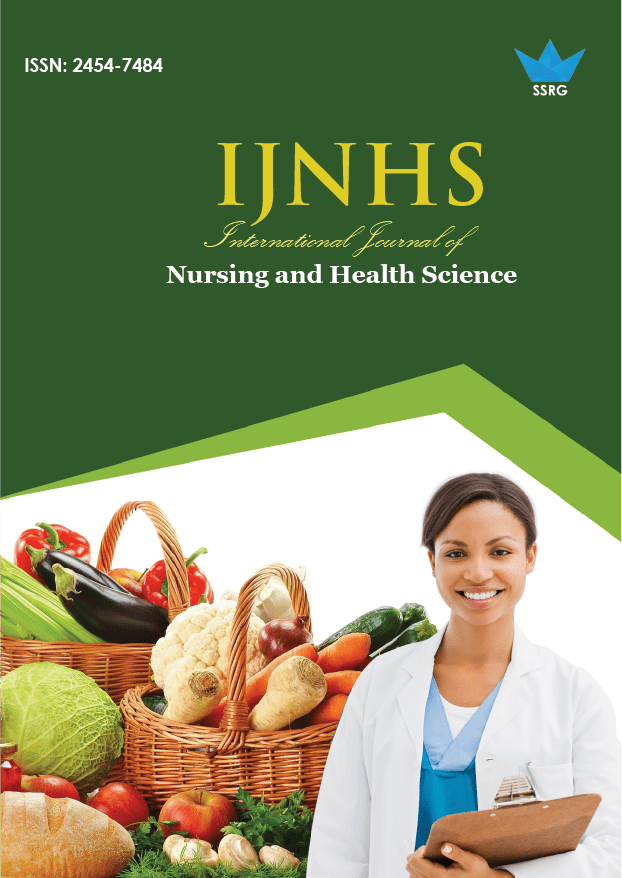Effect of Noise Level On Selected Physiological Parameters Among Neonates Admitted In NICU

| International Journal of Nursing and Health Science |
| © 2017 by SSRG - IJNHS Journal |
| Volume 3 Issue 3 |
| Year of Publication : 2017 |
| Authors : Mr. Dhanraj Munuswamy Babu |
How to Cite?
Mr. Dhanraj Munuswamy Babu, "Effect of Noise Level On Selected Physiological Parameters Among Neonates Admitted In NICU," SSRG International Journal of Nursing and Health Science, vol. 3, no. 3, pp. 1-5, 2017. Crossref, https://doi.org/10.14445/24547484/IJNHS-V3I3P101
Abstract:
Infants in the neonatal intensive care unit (NICU) are subjected to stress, including the sound of high intensity. The sound environment in the NICU is louder than most home or office environments and contains disturbing noises of short duration and at irregular intervals. There are competing auditory signals that frequently challenge preterm infants, staff, and parents. The sound levels in NICUs often exceed the maximum acceptable level of 45 decibels (dB), recommended by the American Academy of Pediatrics. Hearing impairment is diagnosed in 2% to 10% of preterm infants versus 0.1% of the general pediatric population. Noise may cause apnoea, hypoxemia, alternation in oxygen saturation, and increased oxygen consumption secondary to elevated heart and respiratory rates and may, therefore, decrease the number of calories available for growth. Very few studies have explored the physiologic responses of term and premature infants to noise in the NICU. In order to reduce sound levels, they should first be measured. A study was performed to “ Assess the effect of noise level on selected physiological parameters among neonates admitted in NICU of Bharati Hospital, Pune”.
Keywords:
Noise, sound, decibel, Heart rate, Respiratory rate, oxygen saturation, Neonate, NICU,
References:
[1] American Academy of, Committee on Environmental. Noise: a hazard for the fetus and newborn.Pediatrics, 100(4) (1997) 724–7. [PubMed]
[2] Bremmer P, Byers JF, Kiehl E. Noise, and the premature infant: physiological effects and practice implications. J Obstet Gynecol Neonatal Nurs, 32(4) (2003) 447–54. [PubMed]
[3] Diamant R.M.C. The prevention of pollution, chapter 9, Noise Pitman publication, 246-249
[4] Johnson AN. Adapting the neonatal intensive care environment to decrease noise. J Perinat Neonatal Nurs, 17(4) (2003) 280–8. [PubMed]
[5] Morris BH, Philbin MK, Bose C. Physiological effects of sound on the newborn. J Perinatol , 20(8 Pt 2) (2000) S55–60. [PubMed]
[6] Nathan LM, Tuomi SK, Müller AM. Noise levels in a neonatal intensive care unit in the Cape metropole. South African Journal of Child Health, 2(2) (2008) 50–4.
[7] Ramesh A, Suman Rao PN, Sandeep G, Nagapoornima M, Srilakshmi V, Dominic M, Swarnarekha Swarnarekha., Efficacy of a low-cost protocol in reducing noise levels in the neonatal intensive care unit.Indian J Pediatr 76(5) (2009) 475–8. [PubMed]
[8] Park K and Park, J.E. Textbook of Preventive and social medicine, fifth edition, Jaypee brother’s publishers, 173-189.
[9] Singh Meherban., Care of the newborn 6th edition, New Delhi, Sagar publication, 65-68 and 149-154
[10] Thomas Karen ct all, How the NICU environment sounds to the preterm infant, American Journal of MCH July/August 32(4) (2008) 250-253.
[11] http://www. Noise levels in a neonatal intensive care unit in the cape metropole.htm.
[12] http://www.noise pollution.htm.
[13] http://www.noise control act.htm.
[14] http://www.nicu acoustic environment noise,htm
[15] http:// www.Indian journal, com Spectral analysis of noise in the neonatal intensive care unit

 10.14445/24547484/IJNHS-V3I3P101
10.14445/24547484/IJNHS-V3I3P101